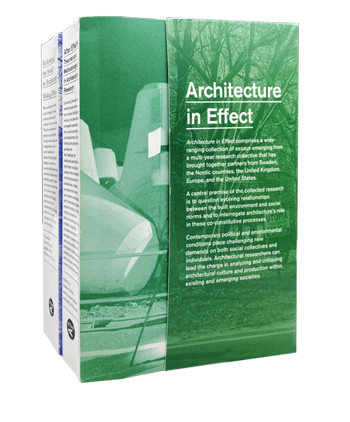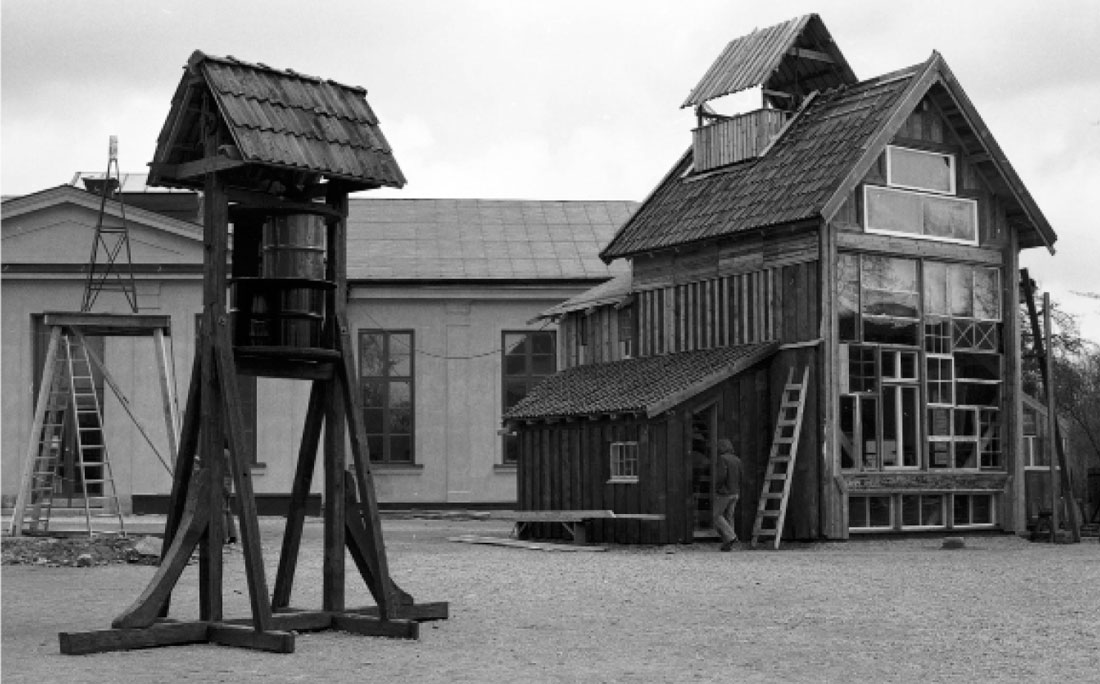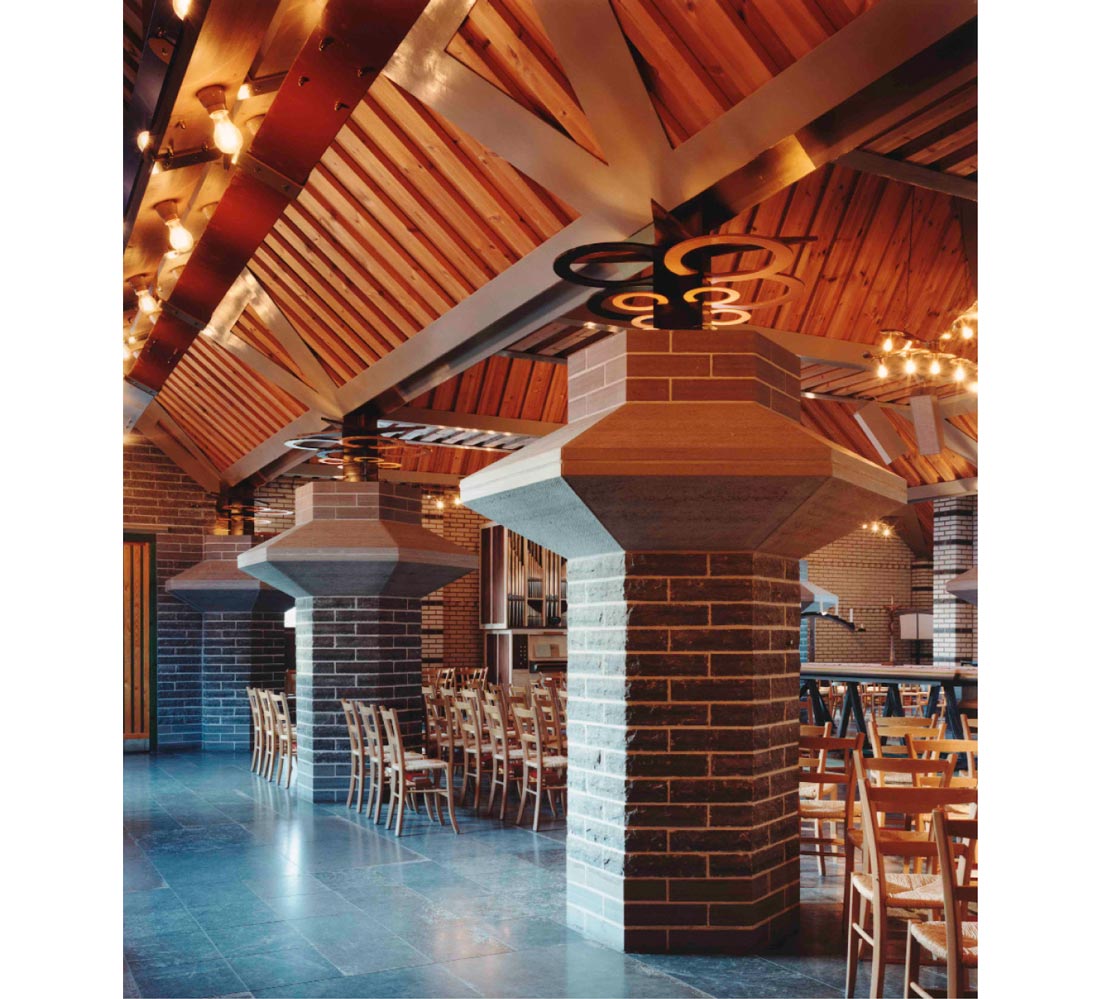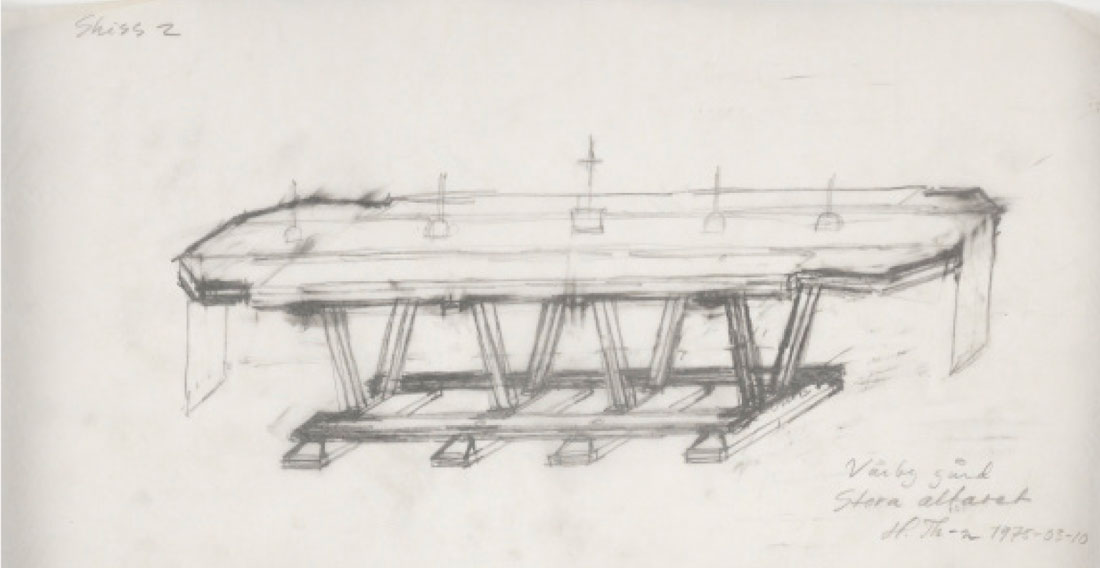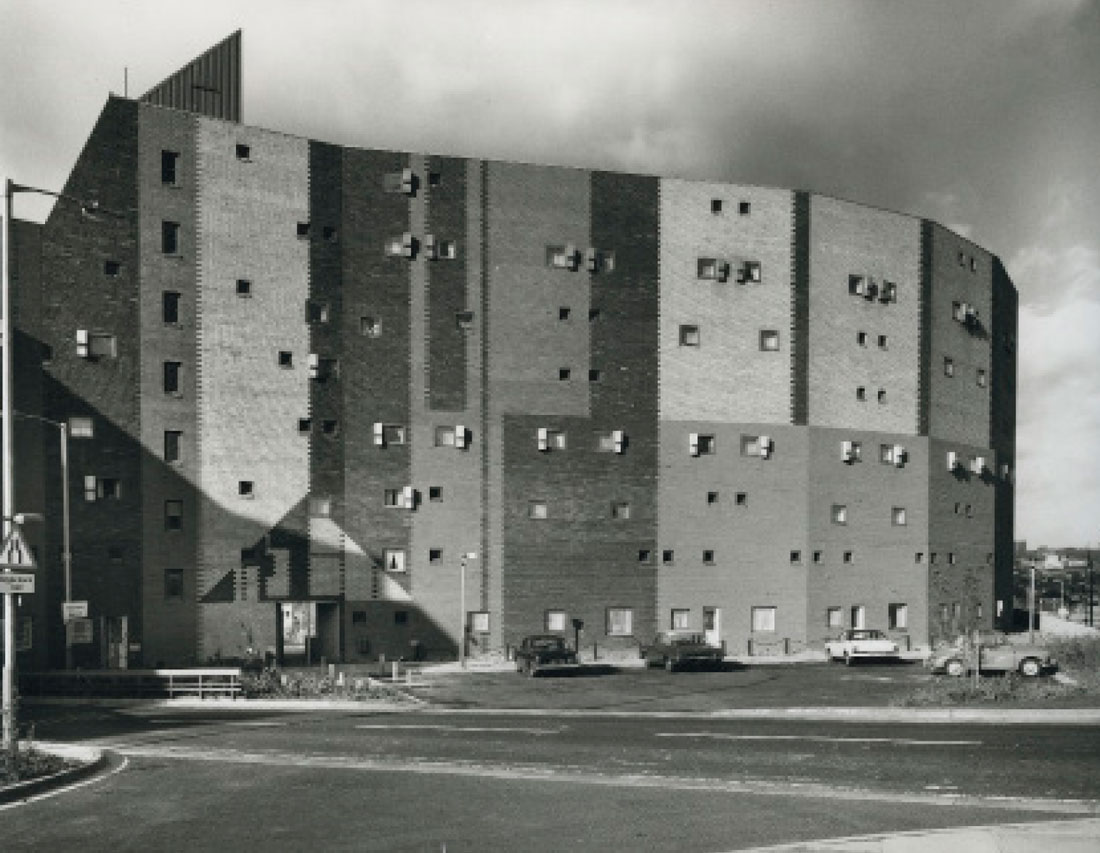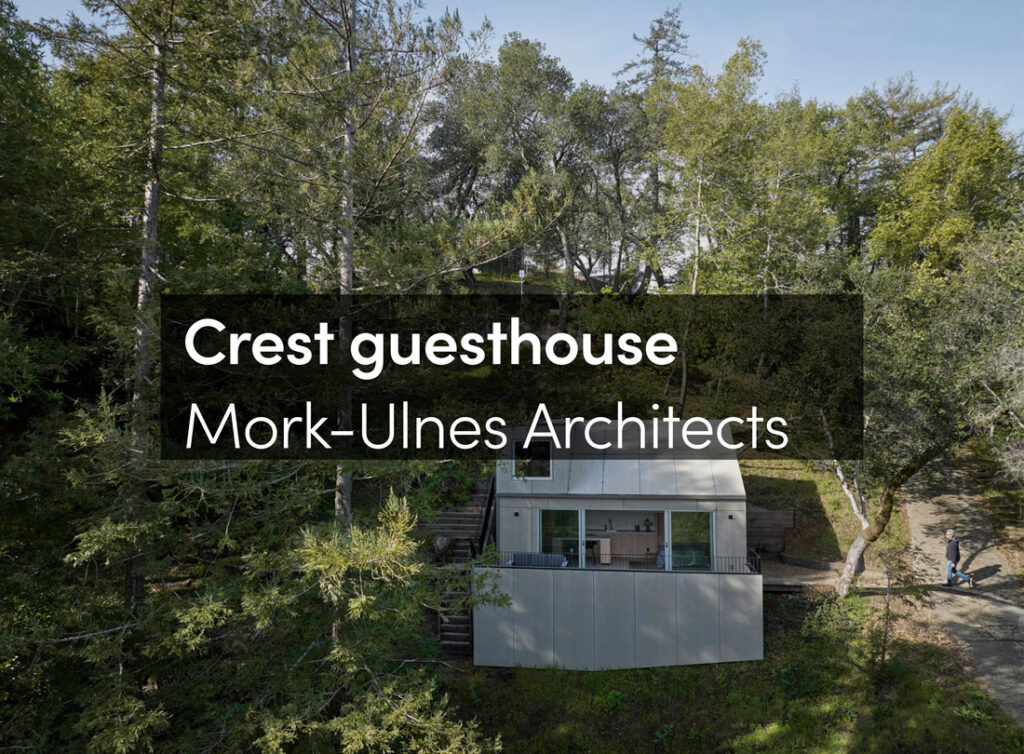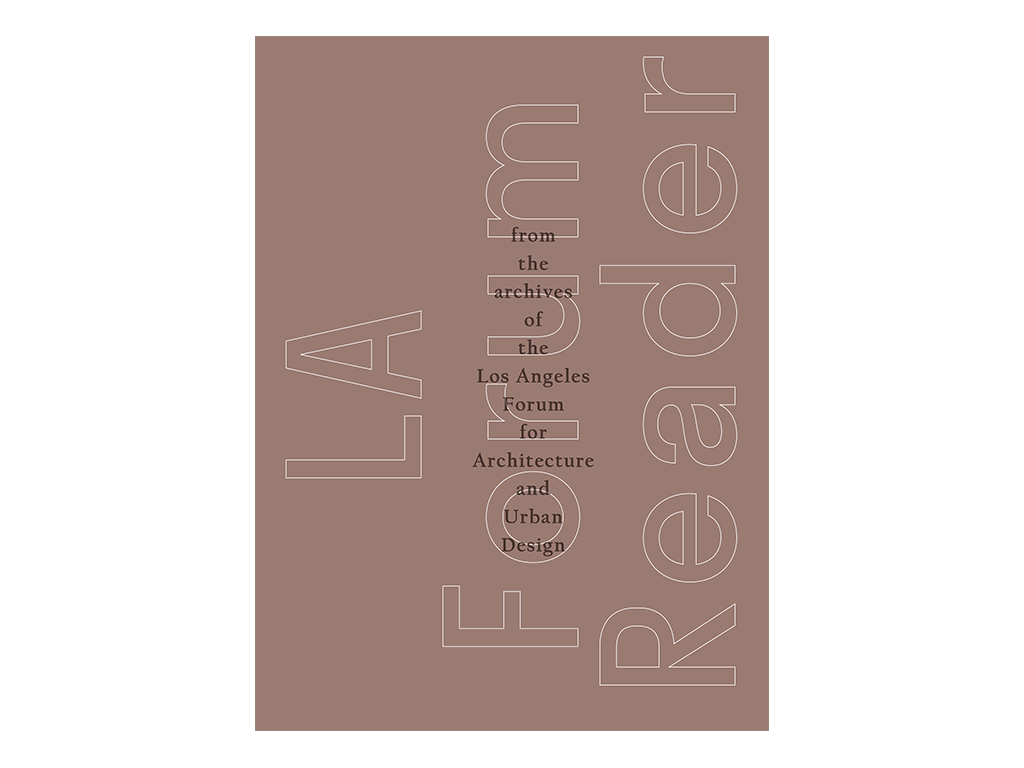In his article “1980–2000: Pomofobi och uppsving,” the architect Thomas Hellquist (2001) argues that an avoidance of postmodernism, what he calls “pomophobia,” ruled the architectural establishment in the early years of the 1980s. This interpretation seems reasonable, as few practitioners would have called themselves postmodernists, but revisiting the period today, can we reframe the postmodern turn in Swedish architecture to broaden the picture? Looking more closely into the international postmodern discourse, another picture develops, one where the Swedish case is not an exception but an important historiographical piece influencing the understanding of the bigger picture. If the concept of “postmodernism” was unclear from the start—as Charles Jencks wrote in 1975, “The only way to kill off the monster is to find a substitute beast to take its place and decidedly ‘Post Modern’ won’t do the job” (Jencks 1975: 3)—revisiting the discussion today is even more confusing. The attempts to define the concept all share a critique of modernism, and they signify that a shift could be formal, social, or political. Otherwise, the lowest common denominator seems to be the contradictions inherent in the discourse. However, postmodernism has left us (as modernism did) with a sedimented idea of a “style” in architecture and certain conceptions of a discursive content.
In the Swedish architectural debate, the concept of postmodernism has been intensively discussed ever since the critic and journalist Eva Eriksson (1976b) introduced Jencks’s (1975) article “The Rise of Postmodern Architecture” to a Swedish audience in 1976. In the debate there was strong resistance toward what was perceived as superficial, often with American connotations, and alternative concepts and readings were introduced. On the other hand, as Claes Caldenby (1984) points out, postmodernism became part of the Swedish discourse much more quickly than in the other Nordic countries. Consequently, the elaboration of postmodernism in Swedish architectural discourse must be considered a crucial debate in the late-twentieth century both in the field of architecture and in a broader cultural context—and it is a debate not yet fully investigated. Revisiting the discussions today also implies a reconsideration of the historiographical self-conception, the notion of a local history and its relations to a broader international stream of ideas. One of the main contributions this article seeks to make is to shift the concept of local history, in this case Swedish history, as an exception excluded from the dominant branch of historical paradigms, and instead stress the particularities of the local expressions and let them influence the understanding of the paradigm at large.
The years around 1980 hosted a dynamic architectural discourse covering ideas that, while contradictory, shared the critique of functionalism. Two trajectories can be distinguished in the discussions on postmodernism, although a great number of themes and ideas overlap. The first stresses formal expressions—such as pastiche, play with historical elements, individualized forms—while the other focuses on social organizations, democratic processes, and labor conditions. However, focusing on these two streams risks repeating the dichotomy between form and content, as well as between aesthetics and politics. I prefer instead to stress how these categories, often seen as typical modernistic divisions, coincide and overlap. This also means searching for the prehistory (Agamben 2009) of these trajectories, retracing them to the point where they are obscure and unthematized, to the “moment of arising” when “postmodernism” came into being. Elaborating on these early discussions may offer perspectives and shed light on expressions still hidden in these turbulent discourses, for example emancipatory voices. In this way the early discussions foreboding postmodernism as a discuorse open for new understandings of a historical paradigm often seen as uniform and determined.
This article has two purposes. The first is to revisit the late 1970s and the early 1980s to outline the early debates on postmodernism. The second is to discuss the feminist movement and its theoretical and practical implications. Through an inquiry into this turning point in Swedish architecture, the article seeks to reframe, or broaden, the postmodern narrative. The discourse of women’s liberation, along with other emancipatory movements, had a major impact on the postmodern movement at large, but, remarkably, this side of postmodernism has not yet been fully formulated in relation to architectural history. In this article the women’s movement in architecture is considered a crucial strand within postmodernism, which consequently influences the historiography of the movement itself.
The Formation of Postmodernism and Today’s Renewed Interest
In the literature it is often said that the term postmodernism was first used, and was even invented, in the field of architecture. This is a truth in need of modifications. Maybe it was through architecture that the term became famous and was popularized to the extent that it formed an ism. But the word was used much earlier in relation to literature and can be traced to the late-nineteenth century. Jencks’s “The Rise of the Post Modern Architecture,” published in 1975, was central to the use of the concept in relation to architecture. With Jencks’s The Language of Postmodern Architecture (1977), postmodernism became the label of an architectural style. However, Jean-François Lyotard’s La condition postmoderne (1979) is often seen as the starting point for the broader theoretical and philosophical discussion. Unlike Jencks, Lyotard focuses on issues relating to power, knowledge, and metanarratives. Fredric Jameson (1984) and David Harvey (1990) interpreted postmodernity (and architecture) as a response to a society undergoing political and economic change.
The so-called postmodern shift in architecture that occurred in the 1970s is largely understood as a critique of modernism and, as with modernism, has subsequently been constructed through canonical works made by a limited group of theoreticians and practitioners, mainly men. According to Mark Crinson and Claire Zimmerman (2010), the most important works of the canon are buildings such as Robert Venturi’s Vanna Venturi House (1962–1964) and James Stirling’s Neue Staatsgalerie (1983); and books such as Venturi’s Complexity and Contradiction in Architecture (1966), Venturi, Denise Scott Brown, and Steven Izenour’s Learning from Las Vegas (1972), Aldo Rossi’s L’architettura della cittá (1966), Colin Rowe and Fred Koetter’s Collage City (1978), and George Baird and Jencks’s Meaning in Architecture (1969). Even though one of the most important objectives for many participants in the postmodern discourse was to deconstruct the universal narrative of modernism through situated microhistories, the result was instead another uniform idea, but this time of what postmodern architecture was and had been.
The postmodern shift, as narrated in the dominant historiographical framework, has mainly been identified as such by men, not only in the field of architecture but in literature, film, art, and other disciplines. Consequently, the male perspective has, to a large degree, determined the understanding of the aesthetic, spatial, and organizational articulations of the societal shift referred to as “postmodern.”
The books most often referred to in discussions of the postmodern canon are not only male productions; most are textbooks intended for use in higher education and, as Beatriz Colomina (2010) stresses, architectural postmodernism is an academic product, associated with graduates from American elite universities, and can be seen as a response intended “to restore the architect to a position of centrality” after the postwar neo-avant-garde. Even Felicity Scott (2007) formulates a similar perspective on postmodernism as a conservative response to experimental and radical practices securing the disciplinary limits. Literary scholar Linda Hutcheon points out that the dominant definition of postmodernism as conservative and apolitical led to a situation where many feminists and other less-dominant groups withdrew from the postmodern discourse (O’Grady 1998). Even critics and writers did not label feminists as postmodernists to avoid connecting them with an apolitical theory and an antifeminist movement (Hutcheon 1998). Despite feminist writers and thinkers being considered crucial to the formation of a postmodern discourse today, the fact that the postmodern platform did not become a productive environment for feminist histories limited the theory itself as well as the histories it developed. Although Hutcheon stresses that postmodernism is political, she also points toward obvious limitations: “It does challenge dominant discourses, but it also reinstates those very discourses in the act of challenging them . . . postmodernism does deconstruct but does not really reconstruct” (O’Grady 1998: 21). Andreas Huyssen (1986) contributes another perspective on postmodernism, one that points toward “a movement of resistance” stemming from minority and activist groups. Huyssen names three political constellations that have contributed to new approaches to, or deviations from, modernism: feminism, ecology, and non-Western perspectives. He stresses that “resistance will always have to be specific and contingent upon the cultural field within which it operates” (ibid: 220–21), a bearing that avoids universal claims and instead points toward the local.
The Swedish postmodern discourse was not formulated primarily by academics and is not obviously associated with universities and the development of PhD programs, as in the American case, even though some of the dominant voices (e.g., Hellquist, Stefan Alenius, and Bosse Bergman) were connected with schools of architecture. But one could claim that many of the Swedish articles on postmodernism had theoretical overtones, that they were mainly written by men, and that they aimed to restore the architect’s central position. On the other hand, the feminist discussions that had begun in the the 1970s soon shifted to take account of postmodernism, thus opening a space for other interpretations. Consequently, contradictions in Swedish architectural postmodernism are articulated through a tension between attempts to question disciplinary limits and the goal of reestablishing the role of the architect. In this article I follow Huyssen’s theoretical framework with the aim of understanding postmodernism as a “movement of resistance” as one of its many faces. Taking the local history of Swedish feminist practices and discourses as a point of departure allows a focus on new constructions, instead of deconstructions (Hutcheon 1998). The themes stressed in these discourses focused not on the formal characteristics of buildings but on forces related to production, finance, and the power structures regulating the conditions of architecture.
During the last ten years we have seen a renewed interest in postmodernism, with books such as Architecture or Techno-utopia (Scott 2007), Utopias Ghost (Martin 2010), Architecture’s Historical Turn (Otero-Pailos 2010), Architecture, Crises, and Resuscitation (Kaminer 2011), Irony, or, the Self-critical Opacity of Architecture (Petit 2013), Exhibiting the Postmodern: The 1980 Venice Biennale (Szacka 2016); the exhibition Postmodernism at the Victoria and Albert Museum (2011–2012); and conferences such as Reconsidering Postmodernism at CUNY, New York (2011). Jencks, one of the originators of this constructed history, has also recently published several volumes relating to postmodernism: The Story of Post-modernism (Jencks 2011c), Radical Postmodernism (Jencks 2011b), The Post-modern Reader (Jencks 2011a). In the Swedish context, Christina Pech introduced the topic in Arkitektur & Motstånd (Pech 2011) (although postmodernism is not the focus of her book), and Caldenby wrote a historical account on the period in 20th Century Architecture (Caldenby 1998). What these contemporary investigations can teach us is that postmodernism is, and has always been, a vague concept. Jencks now even renounces the concept—preferring to call it “critical modernism”—and describes words such as postmodernism as “cannibalistic; they eat up competitors and conserve meanings in a kind of linguistic Darwinism” (Jencks 2011a: 9). At the time of the Reconsidering Postmodernism conference, a journalist described it as driven by an underlying anxiety: “What were we really talking about?” (Stamp 2011). One of the first writers to introduce the concept of postmodernism, the literary theorist Ihab Hassan, stresses that he knows less about it today than he did thirty years ago: “This may be because postmodernism has changed, I have changed, the world has changed” (Hassan 2011: 114).
What was and what is postmodernism? If the answers seem unclear, how can we frame the movement? Why should we even go back and investigate a paradigm that today seems so blurry and undefined? Revisiting the discourses framing Swedish postmodernism is valuable because it has its own history with its own gaps and blind spots. Postmodernism is a concept built up by collective ideas of the past, ideas that construct a self-understanding, an identity, and a local historiographical narrative. To trace its origins, or its prehistories, is to open it up for new identities and possibilities.
Today, many writers revisiting the period have their own perception of postmodernism, and the common aim is to widen, localize, and specify the various angles of the period and thus open up the concept. As Scott writes, “architectural historians can continue to seek out testimony—traces of deviations, accidents, blind spots, and counterhistories— that supports the idea of a radical heterogeneity, or that take us down entirely different paths” (Scott 2010: 398–99). This blurred picture of postmodernism also sheds light on the history of Swedish postmodernism Instead of appearing as a vague debate colored by avoidance or pomophobia, one positioned at the margins of ongoing discussions, it appears to have all the typical contradictory characteristics framing the shift. If one looks at the entire field of arguments instead of focusing on a limited conception of postmodernism that even its inventors no longer believe in, one finds a rich, intense debate engaging both writers and practitioners.
The Swedish Context
The 1970s in Sweden were marked by widespread criticism of the ideology of the Swedish welfare society, much of it related to architecture and urban planning. In the late 1960s an intense debate had erupted around the increasing consumerism and uniformity of the postwar housing environments—a typical postwar critique of functionalism and one repeated in most European countries. These debates on the built environment and the failure of modernism coincided with a reevaluation of the political system—in the Swedish case, with a relaxation of the Social Democrats’ long grip on power. The end of 1970s, often referred to as “the end of an epoch” and a time of “transformation of the Swedish model,” gave way to a new, Third Way policy in the early 1980s. Social democracy presented itself in a new form, using concepts such as “variation” and slogans such as “freedom to choose.” The new ideology was followed by deregulation of the economy, including the housing and building markets. These societal changes had a crucial impact on the cultural climate, which went through decisive transformations around 1980.
The mid 1970s, when the discourse of postmodernism was in its formative phase, was a time when political activist ideas stemming from the 1968 leftist movement coincided with what were later coined “neoliberal” ideas, or expressions of a Third Way policy. “Individual freedom” became a pivotal concept, along the way abandoning its leftist Marcusian domicile to shelter under Thatcher’s claim that “there is no such thing as the society. There are only individual men and women, and there are families.” (Keay 1987). No one-sided perspective can frame the understanding of these turnarounds. This is a situated history that needs to be understood in all its specificities, but these turns are traceable both in political ideas and rhetoric and in architectural theory and practice.
The critique of functionalism, which had followed the movement since its start, intensified at the end of the 1960s with, for example, the debate on the residential suburb of Skärholmen outside Stockholm and Per Råberg’s Funktionalistiskt genombrott (The breakthrough of functionalism, 1970). After a period focused on mass housing outside the city center, the turn toward the inner city and the calls for a more varied environment and a democratic planning process involving inhabitants overlapped in the emerging discussion of postmodernism at the end of 1970s. That is, postmodernism became a rallying cry against what was perceived by many as an authoritarian political system run by a strong state regulating its citizens. Emancipatory movements such as feminism, environmentalism, and radical left-wing politics overlapped (unintentionally) with conservative forces struggling toward a more liberal society. As in most Western countries, the architectural profession made a variety of attempts to reestablish the role of architecture, which since the 1960s many had perceived to be in decline. The different stances taken by architects were ways of rethinking architecture after the failure of functionalism and within the societal transformation toward a Third Way policy. The deregulated market’s impact on architecture was most visible in the changes to government housing regulations (i.e., norms) and in the cuts to subsidies, which made housing a contested field.
One strategy was to stress the formal aspects by putting the conflict of repetition and variation at the center—either by avoiding to discuss the social aspects and instead focusing on architecture with capital A, which often also meant moving beyond the norms, or by trying to reform the existing system. Another strategy was to engage in the social and political aspects of architecture by trying to reorganize the habitat and the city and invent new forms of production and planning processes. The latter strategy often adopted by feminists, city activists, and environmental movements, has been undervalued and not sufficiently considered in discussions of Swedish postmodernism as a transitional discourse (both theoretical and practical) connecting the political, left, and activist 1968 movement to an individualized Third Way architecture in the 1980s.
The Swedish Discourse on Postmodernism from 1975 to 1982
The years 1975 and 1976 were a turning point in the architectural discourse, both politically and culturally. They are marked, for example, by the inauguration of Vårby Gård church (1975) and its presentation in Arkitektur 1976; by Eva Eriksson’s introduction of Jencks and postmodernism (Eriksson 1976b); by the exhibition ARARAT at Moderna Museet (1976), which put ecology, environment, and participation on the agenda; and by Arkitektur, no. 7 (1976), an entire issue dedicated to the revision of functionalism that had recently been set in motion. Permeating all of these is a reevaluation of the role of aesthetics in architecture and in society at large. Per G. Råberg (1976) had already outlined an alternative historiography of functionalism as background for a possible new way forward. He argues that an unconscious split can be traced between functionalistic theories and practices. In parallel with the degradation of aesthetic qualities in later functionalism, investigations were made into the “aesthetic space” (especially on a macro scale like urban public space and landscaping), which “emancipated” aesthetic qualities from being perceived as symbols and decoration. Also in 1976, a debate unfolded in the daily Dagens Nyheter after an article (Heineman 1976) attacked the poor aesthetics of functionalism. [1]
Exhibition ARARAT at Moderna Museet, Stockholm, 1976. Photo: Hans Thorwid. Collection of Moderna Museet
In her follow-up to Heineman’s article, Eriksson (1976a) took as her starting point Jencks’s idea of “political reorganization” as a critique of modernism, introducing Ralph Erskine’s Byker Wall outside Newcastle as an example of participatory planning methods. The project elaborated on themes that had been stressed since the late 1960s and had a strong foundation in a social architecture. What were later seen as contradictions between formalism and participation merge in the Byker project. ARARAT (Pech 2011; Mattsson 2015), by marking a shift toward a cultural climate where politically progressive actions were increasingly rare, was in many ways an endpoint of the experimental, political, and full-scale exhibitions involving architecture at Moderna Museet since the 1960s. [2] If ARARAT is an endpoint, the church at Vårby Gård by Harald Thafvelin is one of the starting points for Swedish postmodernism. Even though the informality and participatory qualities stressed in ARARAT could also be traced in the church, Vårby Gård formulates a new architectural language articulating many of the themes later raised in discussions of postmodernism. The church is characterized by a reorganization of functions into independent areas in the spatial landscape, and the classical uniform church room is fragmented into parts through the variation of events and functions. These spatial variations are materialized through the use of bright colors, while opposing interiors are furnished. For example, a late-nineteenth-century dinner interior is set next to a disco light and a 1970s sofa set. Perhaps the most spectacular innovation is the altar, which resembles a huge dinner table for the communicants to gather around.
Vårby Gård Church, architect Harald Tafvelin, Photo: Max Plunger
The church at Vårby Gård was presented in Arkitektur in 1976 as a conversation between Thafvelin and architect Gösta Winberg (Thafvelin and Winberg 1976). The format of the article breaks with the usual format of building presentations in the journal. The typewriting style font differs from the other articles , and informal attitude is reflected in its note-like format. Even the use of images is innovative: They are cut at different angles, made into collages, cut into pieces and fragments—the appearance is more like that of a scrapbook than an exclusive journal. The building, as well as its presentation in Arkitektur, expresses both trajectories in Swedish postmodernism: the activist claim to reorganize social space and the formalist will to deform established functionalistic forms. In this sense, the church is an emblematic building for a contradictory movement, one that is both political and apolitical, formal and informal. But the building is also significant for melding formal and participatory strategies, using form and aesthetics as techniques for activating the visitor, changing uses, and creating social interaction.
The altar, a drawing made by the architect Harald Tafvelin, Vårby Gård Church, Collection of The Swedish Centre for Architecture and Design
Stefan Alenius, Jan Angbjär, and Henrik Silvferhielm (1978) take up Thafvelin’s work in their article “Manierismer” (Mannerisms), later turned into an exhibition. They argue that architecture is an expression of the society and that functionalistic expression had become outdated. (Indeed, one could trace a deformation of functionalism similar to mannerism’s deviation from the Renaissance.) In their article they bring up Swedish examples of contemporary mannerism, citing Thafvelin’s church and the practice of Peter Celsing as crucial references. In the end they wonder whether “our society in a wider sense is manneristic or if this is only some artists’ boredom with a worn-out language of form” (ibid: 11). This might be the first formulation of a Swedish postmodern position using many of the keywords found in the international discourse but without referring to those discussions. In a follow-up article in Arkitektur two years later (Alenius, Angbjär, and Silvferhielm 1980), they argue that interest in Italian mannerism can be seen in international, for example in the writing of the British historian John Summerson. These articles, together with the exhibitions Mannerism and The Eighty-Room Apartment from 1980, are some of the earliest formulations of a Swedish postmodernism, expressing both a formal position and a theoretical standpoint.
The formal aspects of “the new architecture,” even in these early formulations by Alenius, Angbjär, and Silvferhielm, coincide with developments in contemporary politics and economics. The focus on deformations of the architectural form in theories such as “mannerisms” (a critique of functionalistic composition ideals) can be understood in relation to changes in housing production. The turn from socially oriented mass-housing projects in the spacious outskirts, where objects could be designed from inside-out, toward the production of housing for a wealthy middle class in the compact inner city, mostly infill and renovation/rebuilding projects, coincided with Norberg-Schulz’s theories about “genius loci” the use of historical elements, and deformations of the modernistic object (often due to limited sized sites) (ibid.). [3] Bosse Bergman also connected what he calls a “new architecture” with the economic and political situation. The elaboration of the modernist form through the use of historical elements or other formal articulations marking individuality and variation was interpreted by Bergman (1980) as an act intended to subvert capitalistic consumer-oriented architecture, expendable in its repeated form, in the suburbs. The turn from the interior of the apartments (e.g., discussions on norms and the role of the user) toward urban space as “a room” with walls, floor, and ceiling, drawing on themes in Learning from Las Vegas (Venturi, Scott Brown, and Izenour 1972), was significant in the early Swedish discourse on postmodern architecture, as for example put forward by Råberg and Bergman.
The overlap of the political-economic reality and formal architectural expressions contributes to the understanding of the use of historical references in the 1980s, to be noticed both nationally and internationally. The first architectural biennial in Venice presented postmodernist architecture without identifying it as such, selecting as its title, “La presenza del passato” (The presence of the past). [4] History was also lifted up as the central theme of the 1980 Stockholm Exhibition. The exhibition publication 1930/80 Arkitektur Form Konst (Sydhoff 1980) states, “we carry the history with us into the future.” The year 1980 was the fiftieth anniversary of the Stockholm Exhibition, which was celebrated with several exhibitions: 1930/80 Arkitektur Form Konst (1930/80 Architecture Form Art) at Kulturhuset and Funktionalismens genombrott och kris—Svenskt bostadbyggande 1930-80 (The Break-Through and Crises of Functionalism—Swedish Housing 1930–80) at the Museum of Architecture; Boplats 80 (Habitat 80) in the Kungsträdgården; and Den ofullboradade funktionalismen (Uncompleted Functionalism) at the Rudolf Steiner Seminar in Järna. International postmodernism also made its way into the Swedish architectural discourse. Besides Eriksson, writers such as Caldenby (1979a), Bergman (1980), Olof Hultin (1981), and Mats Tormod (1980) explicitly discussed postmodernism around 1980, all pointing toward its qualities but also criticizing it as being too far from the Swedish culture (Tormod) or too introverted (Caldenby).
Another important writer and architect during this period was Hellquist, the initiator and chief editor of the Swedish Magasin Tessin. He wrote the article “Postmodernism” (Hellquist 1980) in the first issue. This little magazine, devoted to architecture with a capital A as well as to history, was produced, as the preface to the first issue explains, “at a time when building as art is impossible” (ibid.: 3). Instead of trying to find solutions in the offices of the engineers and social scientists, “the journey will go into the soul of man, back in history and forward into utopia” (ibid.: 3–4). The magazine became a forum for Swedish architects interested in postmodernism until it closed in 1987.
Byker Wall, Newcastle, architect Ralph Erskine. Collection of The Swedish Centre for Architecture and Design
Besides the discussions of formal issues—such as historical elements, mannerism, and international references—one can trace another path, intertwined with the first but focused more on housing and social organization. The first issue of Arkitektur in 1977 discusses a theme that came to be significant in the coming years (Eriksson 1977; Svensson 1977; Johansson 1977): the new trend of single-family housing involving land speculation, privatization, and individualization. In 1979 Hultin took up the topic in his article “Nånting har hänt” (Something has happened) (Hultin 1979). After the so called Miljonprogrammet (Million Program; the nickname for the 1965–1974 drive to build almost one million apartments in Sweden) and the increasing number of single-family houses, consumers began to exert strong pressure on developers to offer new qualities, such as an intimate scale, the design of their own environment. The residential areas built during the Million Program were subsidized by the state if the norms regulating living areas were met. Consequently, the materialization of the Million Program, the design of plans of the apartments, were controlled through subsidies. The norms became a controversial topic. On the one hand, they were the regulations blamed for the repetitive and poorly designed living areas; on the other hand, they were a guaranty of equality and democracy. Hultin considered the shift toward a more varied and individualized living environment as something positive. For him, however, the biggest obstacle was not the norms but the subsidies. In the introduction to the Hultin’s article, (Caldenby 1979b) pinpoints two attitudes of the profession one affirming the integration of activities, the human scale, and the architectural variations; the other accusing the formal language of being too intrusive and claiming that all the good intentions of the 1970s had been reduced to “easily sold design stunts.” The first issue of Arkitektur in 1980 also elaborated on postmodernism, housing, and the city with articles on Leon Krier (Caldenby 1980), Ricardo Bofill (Gromark 1980), semiotics (Wåhlin 1980), the new consumer landscape (Rundkvist 1980), restoration, infill, and new projects such as Minneberg in Stockholm (Inghe 1980).
The director of Statens Planverk Lennart Holm was an advocate for functionalism and he criticized the plans for Skarpnäck, outlined by the City Building Office, for being a program directing architects not to build from the inside out and ignoring knowledge, habits, and values (Holm 1980). Instead, he argued, form and volume should be the starting points, and the plan should rely on relatively dense exploitation to reduce rents. Even though he found examples of resistance towards planning from the inside, such as Engstrand-Speek and Bengt Lindroos, Holm referred to the architectural drama of Skarpnäcksfältet as “masquerade and a panegyric over the late 1970s loss of will” and stated, “it is shameful that it is the City itself that is the director” (ibid.: 29). These different positions received even more elaboration in two lectures by Krier and Holm (1981) that were subsequently discussed by Krister Bjurström (1981) in the article “Form and Form, Krier och Holm.”
In 1982, the exhibition Provokationer (Provocations) opened at Kulturhuset in Stockholm. This major manifestation of postmodern introduced, among others, Ettore Sottsas, Venturi, Michael Graves, Charles Moore, and a catalogue with texts by Caldenby, Hultin, Folke Edwards, Barbara Radice, and François Burkhardt. Eriksson wrote a review of the exhibition in July in Dagens Nyheter, one of the major Swedish daily papers, and later the same year the first large debate outside the field of architecture took place in the same paper. The editor, Arne Ruth, mentioned that the concept of postmodernism had developed in the architectural debate but had spread to other cultural fields and that “in a series of articles postmodernism as a concept will be analyzed and the tendencies will be valued in relation to the modern tradition” (ibid.: 4). Voices from a wide range of disciplines articulated a variation of standpoints in relation to postmodernism and opened the concept for a broader cultural discourse. The debate ended with Leif Nylén’s article “Punk Aesthetics and Postmodernism,” (Nylén 1983) in which he points out that the resurgence of modernism around 1980—what he calls “neomodernism”—was a revival only of its decorative, not ideological, aspects. In this sense, “neomodernism” could be likened to postmodernism, as simply a “look” or style, “something you borrow and drape yourself in without taking the original theoretical claims for real” (Ibid: 4) This debate was the starting point for a broader discussion of postmodernism in Sweden. In subsequent years, many articles were published on the topic, covering literature, art, architecture, and culture. [5]
At this point, the feminist movement and other activist movements were not considered part of postmodernism or the new tendencies in architecture. Even if feminist standpoints did not affect the discussions of postmodernism in the professional or daily press, the formation of women’s groups into organized groups at the end of the 1970s got a lot of attention. Questions about gender and feminism had been absent in the architectural and planning discourse since the late 1950s but returned at the end of the 1970s with a focus on labor division, professional roles, and forms of living (Listeborn 2002). This discourse intertwined with the emerging postmodern discourse and cannot be separated from it. Indeed, it should be seen as an important expression of the shift to postmodernism. As Susan Rubin Suleiman (2011) and Craig Owens (2011) point out in relation to literature, more important than just recognizing the existence of women’s work is raising the question of how the specificity of that work within the larger movement affects the understanding of the movement itself.
Toward New Constructions: Converting Postmodernism through Feminism
Within the sphere of architecture (comprising everything from planning, designing, and policymaking to building structures), new feminist sensibilities were taking form during the late 1970s and early 1980s, resulting in shifts that effected power relations, economic and social conditions, and the role of architecture in society at large. In the wake of the 1968 movement, Sveriges Civilingenjörsförbund (Swedish Association of Graduate Engineers) established an equality council in 1970 that analyzed women’s situation in the engineering profession (Werner 2006). After the council was disbanded in the late 1970s, the discussions it had begun moved to women’s liberation movements such as the Fredrika Bremer Förbundet, which organized a thematic week at the Tekniska Museet in 1979 around women and technology entitled “Technology in the Home.” Also in 1979, a new professional association—the Nordiska kvinnors bygg- och planforum (Nordic Women’s Building and Planning Forum)—was set up to answer questions about women’s roles in the building sector. This new association was a conglomeration of three Nordic subgroups: the Danish “Kvinder i byggsektorn,” (Women in building sector) the Norwegian “Kvinnopolitiskt planforum,” (Women’s political plan forum) and the Swedish “Bo i Gemenskap” (BiG) (Living together) (ibid.). They organized a conference in Kungälv, Sweden (September 7–8, 1979) that opened the way for intense discussions about, as well as real changes to, women’s roles in Swedish architecture. Other Swedish feminist groups taking form during this period were Kvinnors Byggforum (Women’s Building Forum, KBF), the research project “Det nya vardagslivet” (The new everyday life), and Athena, an association founded in 1986 (Krantz 1991). The various components of this feminist platform had in common a constructive critique and visionary alternative formulations.
Even though not so often referred to in the debate in Architecture in the 1980s, questions about housing and living environments, specifically collective housing, were central in the discussions initiated by the feminist movements. Collective housing was a form of living that was popular already in the 1930s by intellectuals in Swedish Social Democracy, such as Alva Myrdal (BKB 1954; Jussil and Vestbro 1964; Caldenby and Walldén 1979; Caldenby 1992). Myrdal collaborated with the architect Sven Markelius in planning and building iconic collective housing in Stockholm. This first wave of collective apartment buildings was based on a division of labor: building employees, often women, provided services for the inhabitants. The staff cooked, cleaned, and provided childcare. On the one hand, this enabled a restructuring of traditional gender roles for the people living in the building; on the other hand, it encouraged class and gender differentiation in relation to those working in the building. Even though these early forms of collective living constituted an important platform (and role models) for a possible organization of women’s daily life, it had its obvious limitations. Dolores Hayden comments that such a model does “not sufficiently challenge male exclusion from domestic work, nor does it deal with households” (Hayden 2005: 52). But this was exactly what the 1980s feminists reformulated.
During the financial crisis in the 1970s, which coincided with the collapse of the collective house movement, a group of female architects, writers, and intellectuals rethought collective housing, discussing new possibilities for organizing collective forms of living. Through their work they started to define new areas of research and initiated seminars at Swedish universities. This resulted in the formation of BiG, whose activities were supposed to move beyond analyzing the structures and formulating critiques of functionalistic models. Instead, the main goal was to imagine a new reality, what BiG members called “utopia in reality.” [6] A key concept was the “middle level” (mellannivån), a “level” where things were made collectively (Krantz 1991).
BiG developed a strategy labeled “practical activism” that involved constructing models for the future habitat (Lundahl 2014). Their work shows a shift in attitude concerning the role activism and feminist strategies should play in the field of architecture: from critiquing power structures to effecting real change from inside power structures. Members believed they could use their central positions in the Swedish Association of Public Housing Companies and the Swedish Association of Architects, as well as their positions as writers for mass-circulation magazines and newspapers, to change reality. BiG promoted the idea of a “second wave” of collective housing based on labor distribution among inhabitants instead of the earlier differentiation between employees and inhabitants. This was more attractive for developers, and in the 1990s almost fifty houses were built (Berg 1982; Vestbro 1982; Ågren 1984; Caldenby & Walldén 1984; Palm 1984; Lundahl & Sangregorio 1992).
At the crucial 1979 Kungälv conference, seventeen women architects and engineers working in the building sector met in Stockholm under the name “Kvinnors Byggforum” (Philipson 1979), an association they would make formal the following year. They drew inspiration from the 1979 Union Internationale des Architectes meeting in Mexico City, at which the Union Internationale des Femmes Architectes had discussed questions of equality and feminist aspects of planning and housing. At the time, associations for women architects were being founded in many countries, and “hidden discrimination” was on the agenda (Rapp 1979).
If BiG used practical activism to reformulate the habitat as an emancipatory space and platform for new opportunities, Kvinnors Byggforum (Women’s Building Forum, KBF) wanted to change the gender and power structures in the building sector. KBF believed women should be equally represented in decisions; should be active as project leaders, builders, and developers; that their architectural studies should be financed by the state; and that they should participate in the public debate. Feminism was seen during this period as a revolutionary power in the field of architecture and planning. Not only was it a question of equality between men and women; feminism implied new perspectives on technology, planning, and the built environment at large. The work that started at the conference in Kungälv in 1979, where hundreds of women formulated their visions for a future society, continued in various working groups, each with specific tasks such as reviewing the new proposal for a planning and building law, analyzing new loan regulations, putting together a program how to develop women’s studies in architecture, or writing a handbook on planning for women (Tahm 1980). Like BiG, KBF was an expression of how feminist activism had moved from a critical approach to a constructive position, trying to change reality from within existing power structures.
In 1980, the year of postmodernism in architecture, one of the largest exhibitions in Stockholm was Boplats 80, held under a tent structure designed by Erskine in the central city park Kungsträdgården and organized by the Swedish Association of Architects. Many actors were invited to formulate their opinions on the 1980s habitat through contributions in the exhibition, including BiG and KBF. “The freshest ideas come from the women,” one of the largest Swedish papers proclaimed (Arnstad 1980). In the exhibition a model of a refurbished modernistic slab from the 1940s made by BiG showed members of an alternative collective living in an old building, an elaboration on the possibilities of alteration as an alternative to demolition. The model was carefully furnished, like a big dollhouse, with common spaces such as workshops, laundry, living rooms, kitchen, and dining areas, and it was presented as an idea that could be realized through a variety of strategies. At the same exhibition, KBF worked in full-scale to create an environment for visitors to move through. This was a way to counteract the abstraction of the (male) text-and-image exhibitions hanging flat on the wall. KBF built an entrance and a hallway, in-between spaces they claimed were often neglected or treated in routine ways. Like BiG, KBF invented new spaces and new uses for the living spaces of future apartments, and both groups encouraged individuals to make their own decisions about the organization of their own spaces.
Concluding Remarks
Revisiting the period when Swedish postmodernism was taking form as a discourse reveals a field of contradictions and overlaps, simultaneously political and apolitical. Contemporary research show of the period show the same heterogeneity outside Sweden. Even though international postmodernism was often seen as strange and unfamiliar, the Swedish discourse appears today as typical of the larger debate. Swedish postmodernism coincided with the financial crisis at the end of the 1970s, and the period is often referred to as “the end of an epoch” or “the transformation of the Swedish model.” Thus, the critique of functionalism paralleled a critique of the political system. The Social Democrats stressed concepts such as “individualization,” “variation,” and “freedom to choose” and initiated deregulation of the finance and housing markets. The architectural and political discourses were intertwined and dependent on each other.
Two trajectories can be distinguished in the Swedish debate on postmodernism, but they are closely related and intertwined. One focused on formal expressions and the other on social organization. Tracing the prehistory of these trajectories reveals how aesthetic qualities overlap with politico-economic developments and strategies of democracy and user participation. The first track emphasized the relation between repetition and form and privileged urban space over a building’s interior. This meant either moving beyond the system of norms and regulations stressing architecture as art or trying to reform the existing system. The latter track—social organization—often taken by feminists, city activists, and the environmental movements, engaged in the social and political aspects of architecture by trying to reorganize the habitat and the city and invent new forms of production and planning processes. Remarkably, this side of postmodernism has not yet been fully explored in relation to Swedish architectural history as a transitional discourse connecting the political left and the 1968 movement to an individualized Third Way policy of the 1980s.
The discourse of women’s liberation, as well as of other emancipatory movements, had a major impact on the postmodern movement at large. The women’s movement in architecture was a crucial part of the larger movement called postmodernism, and even though their role is not part of the dominating historiography it is obvious revisiting the time period today that their role must influence the understanding of the postmodern movement. From a feminist perspective, the postmodern period can be described as a shift from critique to action, from deconstruction to construction. In the 1980s the feminist activists in the field of architecture left the streets, the demonstrations, and the rhetorical resistance and entered the power structures, exercising “practical activism.”
